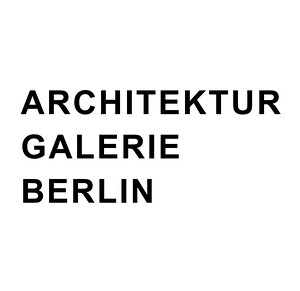Playing Architecture
March 11–April 16, 2022
Karl-Marx-Allee 96
10243 Berlin
Germany
Introductory note
Originally, this exhibition was intended to open two years ago. The COVID-19 pandemic not only necessitated its postponement but also placed the question of the exhibition’s relevance in a completely new context. For Ulrich Müller, director of Architektur Galerie Berlin, and Oskar Grąbczewski, founding partner of Katowice (Poland) based studio OVO Grąbczewscy, it was initially unclear whether the exhibition could still be shown in this form at all—or whether it had become outdated. After discussing it intensively over some time, they concluded that the exhibition not only can but must be shown in a time of global crisis. Despite pressing social, environmental, and economic issues, architecture is always linked to the deeply human need for wellbeing, creativity, individuality, and hope.
On February 24, 2022, a few days before the opening, the attack on Ukraine by Russia sparked yet another crisis, this time much more profound. Nevertheless, based on the previous considerations, Architektur Galerie Berlin and OVO Grąbczewscy quickly agreed that the exhibition must go on. It stands for what free people in free countries can achieve when they act with respect toward one another, regardless of their political viewpoints.
The exhibition
Architecture is a serious matter—in that respect, OVO Grąbczewscy is no exception. Functional, constructive, legal, and financial requirements, as well as client expectations mean that architecture is the most “unfree” of all the arts, and the trend is rising. In order to retain the creative freedom necessary for their profession, the architects developed the thesis of “playing architecture.” This enables them—despite stringent conditions—to apply their vision, research, and sense of freedom, fun, and humor as they see fit. But what initially sounds like a simple strategy is much more complex on closer inspection. The architects simultaneously question the role of their profession and its future: Are its creative and organizational skills still needed in an increasingly standardized and specialized society, or will the built environment soon be generated by balancing rational requirements with AI-controlled decision-making processes? If so, what will be the task of architects?
The potential of “playful” design is demonstrated by the works of OVO Grąbczewscy presented in this exhibition. The Museum of Fire (Żory, 2015), for example, was first intended as a simple information pavilion—until the architects took the history of the city at its word: Żory is the Polish word for “fire.” For their design of the Małopolska Science Center in Krakow (2018, 3rd prize in competition), they combined six seemingly incompatible concepts. And the Wielka Wieś Administrative Center (2016) was not “designed” at all; the architects copied the characteristics of the surrounding buildings in terms of scale, form, and material.
This playful approach also reveals itself in the exhibition concept: Playing Architecture is not only for architects but for everybody. Visitors are asked to participate, play, and transform the exhibition—to build their own vision of architecture. Photographs of the six featured projects cover freestanding walls constructed from 40 x 40 cm cubes. Each side of the cubes shows a different motif so that visitors can find elements that go together and assemble a picture from them, just like in a puzzle. The usual museum mantra is replaced by “please touch the exhibits.” This request was immediately put into practice in an exemplary manner at the opening. During their performance, the young Polish punk band Szklane Oczy dismantled the exhibition, and visitors subsequently rebuilt it according to their own ideas.
OVO Grąbczewscy was founded in Katowice in 2002 by Barbara and Oskar Grąbczewscy and counts among Poland’s most successful architecture studios. It is currently working on a housing complex on Mariacka Street in Katowice (2019, 1st prize in competition) and the Cognitarium Knowledge Center in Koszalin (2021, 1st prize in competition). The exhibition Playing Architecture was realized in cooperation with Architektur Galerie Berlin and The Polish Institute Berlin, and supported by The Foundation for Polish-German Cooperation.



